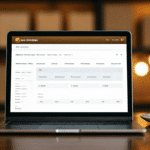Protecting Your Brand and Customer Information with Ecommerce Security
In today's digital landscape, where online shopping is ubiquitous, ecommerce security is paramount for businesses. Cyberattacks and data breaches can severely damage your brand's reputation, erode customer trust, and result in significant financial losses. This article explores the importance of ecommerce security, the risks associated with online transactions, and the best practices to secure your website and payment gateways, thereby building trust with your customers.
The Importance of Ecommerce Security for Your Brand
As a business owner, your responsibilities extend beyond selling products or services to safeguarding your customers' sensitive information—such as names, addresses, and credit card details—from cyber threats. Customers place their trust in you by sharing this information, and it is both your legal and ethical duty to protect it. Effective ecommerce security measures ensure that customer data and your business are shielded from cyberattacks.
Implementing robust ecommerce security measures not only protects your customers but also enhances your brand's reputation. According to a 2023 study by Statista, businesses that prioritize security experience a 30% increase in customer trust and retention. Conversely, a data breach can lead to a significant loss of customer trust, negative publicity, and legal consequences. Therefore, investing in ecommerce security is a crucial step in building a successful and trustworthy brand.
Understanding and Mitigating Cybersecurity Risks
Common Types of Cyberattacks
Ecommerce websites face a variety of cyber threats, including:
- Phishing Attacks: Deceptive attempts to obtain sensitive information by masquerading as a trustworthy entity.
- SQL Injection: Insertion of malicious code into SQL statements, allowing attackers to access or manipulate database information.
- Cross-Site Scripting (XSS): Injection of malicious scripts into webpages viewed by other users.
- Ransomware: Malware that encrypts a victim's files and demands payment for decryption.
- Social Engineering: Manipulating individuals into divulging confidential information.
Preventive Measures
To mitigate these risks, ecommerce businesses should implement strong security measures such as:
- SSL Encryption: Protects data transmitted between your website and customers.
- Two-Factor Authentication (2FA): Adds an extra layer of security for user accounts.
- Regular Monitoring: Continuously monitor your website for suspicious activities.
- Security Breach Plans: Have a comprehensive plan in place to respond to security incidents.
Adopting these practices ensures the safety and security of your online transactions, safeguarding both your business and your customers.
Implementing Best Practices for Ecommerce Security
Securing Your Infrastructure
Securing your website is essential to protect it from malware and other cyber threats. Best practices include:
- Choose a Reputable Web Hosting Provider: Ensure your host offers robust security features.
- Use Firewalls: Implement web application firewalls to block malicious traffic.
- Regular Backups: Schedule automatic backups to recover data in case of an attack.
- Security Plugins and Services: Utilize reputable security plugins like Wordfence or services such as Sucuri to enhance security.
Additionally, keep all software and plugins up to date. Outdated software can introduce vulnerabilities that hackers exploit. Implementing strong passwords and enabling two-factor authentication can further safeguard your website.
Educate your team on common security threats, such as phishing scams and social engineering attacks, to ensure vigilance in maintaining the website's security integrity.
Selecting Secure Platforms and Payment Gateways
Choosing an ecommerce platform with robust security features is essential for protecting your business and customer information. Platforms like Shopify, Squarespace, and WooCommerce offer built-in security measures such as SSL support, firewall protection, and regular security updates.
When evaluating platforms, consider the following security features:
- Automatic SSL certificate installation.
- Regular security updates and patches.
- Compliance with industry security standards (e.g., PCI DSS).
- Integration with security plugins and third-party security services.
For payment gateways, reputable options like PayPal, Stripe, and Sage Pay offer advanced security features, including fraud detection and prevention tools.
Regularly monitor your payment gateway for any suspicious activity or unauthorized transactions to maintain the safety of your customers' information.
Enhancing Security Through Advanced Features
SSL Certificates: What They Are and Why You Need Them
SSL Certificates are essential for ecommerce websites as they protect data transmitted between your website and its visitors. SSL encrypts sensitive information such as credit card details, making it difficult for hackers to intercept and steal this data. Additionally, SSL certificates help build trust with your customers by displaying security indicators in the browser, such as a padlock icon.
Implementing SSL certificates not only safeguards sensitive information but also improves your website's search engine ranking. According to Google, SSL is a ranking factor in their search algorithm, meaning that websites with SSL certificates are more likely to appear higher in search results. This is because Google prioritizes websites that provide a secure browsing experience for users.
Two-Factor Authentication: Adding an Extra Layer of Security
Two-Factor Authentication (2FA) enhances the security of your ecommerce site by requiring users to provide an additional form of identification, such as a code sent to their email or phone, before accessing their accounts. This makes it significantly harder for hackers to gain unauthorized access to customer accounts and sensitive information.
Implementing 2FA can also increase customer trust and confidence in your ecommerce site. With the rise of online fraud and data breaches, customers are more cautious about sharing their personal information online. By offering 2FA, you demonstrate that you prioritize their security, fostering greater trust and loyalty.
However, it's important to note that 2FA is not entirely foolproof. Hackers may use social engineering tactics to trick users into revealing their authentication codes or intercept codes through phishing emails or malware. To mitigate these risks:
- Educate your customers on the importance of protecting their authentication codes.
- Implement additional security measures, such as biometric authentication.
- Regularly update and review your security protocols to address emerging threats.
Employee Training and Ongoing Security Maintenance
Training Your Team in Ecommerce Security Protocols
Training your team in ecommerce security protocols is critical for maintaining a secure online environment. Employees who handle sensitive information should be well-versed in best practices to prevent data breaches and cyberattacks. Key areas to focus on include:
- Password Policies: Implement strict password requirements, including complexity and regular updates.
- Cybersecurity Best Practices: Educate employees on recognizing phishing scams, malware, and other cyber threats.
- Data Handling Procedures: Establish protocols for securely handling, storing, and transmitting sensitive information.
- Incident Response: Train employees on how to respond to and report security incidents promptly.
Regular training sessions and updates on the latest security threats and prevention techniques can significantly reduce the risk of internal vulnerabilities.
Regularly Updating and Maintaining Your Ecommerce Site's Security Measures
Maintaining your ecommerce site's security is an ongoing process that requires regular updates and vigilance. To ensure continuous protection:
- Software Updates: Regularly update your website's software, plugins, and themes to patch known vulnerabilities.
- Security Monitoring: Use security monitoring tools to track website traffic and detect suspicious activities in real-time.
- Patch Management: Apply security patches promptly as they become available to address new threats.
- Regular Audits: Conduct periodic security audits to identify and rectify potential weaknesses.
Staying informed about the latest security trends and threats allows you to proactively enhance your security measures, ensuring that your website remains secure and your customers' data is protected.
Responding to and Recovering from Cyberattacks
Recovering from a Cyberattack: Steps to Take After a Breach
Despite the best preventive measures, cyberattacks can still occur. Recovering from a cyberattack involves several critical steps:
- Assess the Damage: Determine the extent of the breach and identify the compromised data.
- Contain the Breach: Implement measures to stop further unauthorized access, such as disabling affected accounts or taking the website offline temporarily.
- Notify Authorities: Report the breach to relevant authorities and regulatory bodies as required by law.
- Inform Affected Customers: Transparently communicate with customers about the breach and the steps being taken to protect their information.
- Identify the Cause: Investigate how the breach occurred to prevent future incidents.
- Enhance Security: Update security protocols, patch vulnerabilities, and provide additional employee training.
- Monitor Systems: Continuously monitor your systems to detect any lingering threats or new vulnerabilities.
Having a comprehensive incident response plan in place before a breach occurs can streamline these steps and minimize the impact of the attack.
The Role of Third-Party Security Audits in Ecommerce
Third-party security audits are vital in identifying vulnerabilities within your ecommerce website. Hiring a reputable third-party auditor can help you:
- Identify and assess security weaknesses that internal teams might overlook.
- Provide an unbiased evaluation of your current security measures.
- Develop a comprehensive security plan tailored to your specific needs.
- Ensure compliance with industry security standards and regulations.
Regular security audits not only help in fortifying your website against cyber threats but also demonstrate your commitment to maintaining high security standards to your customers.
Building and Maintaining Customer Trust Through Security
Building and maintaining customer trust is essential for the success of any ecommerce business. Robust security measures are fundamental in fostering this trust. Implementing features such as SSL certificates, two-factor authentication, and secure payment gateways demonstrates your commitment to protecting customer data.
According to a Forbes report, 78% of consumers are more likely to purchase from websites that prioritize security. By investing in ecommerce security, you not only protect your business and customers but also enhance your brand's reputation and loyalty.
Conclusion: The Importance of Prioritizing Ecommerce Security for Your Brand's Future
Ecommerce security is indispensable for businesses operating online. Neglecting security measures can lead to significant financial losses, reputational damage, loss of customer trust, and legal repercussions. By implementing robust ecommerce security practices and maintaining them diligently, you can safeguard your business and your customers' sensitive information, ensuring a secure and prosperous future for your brand.




















